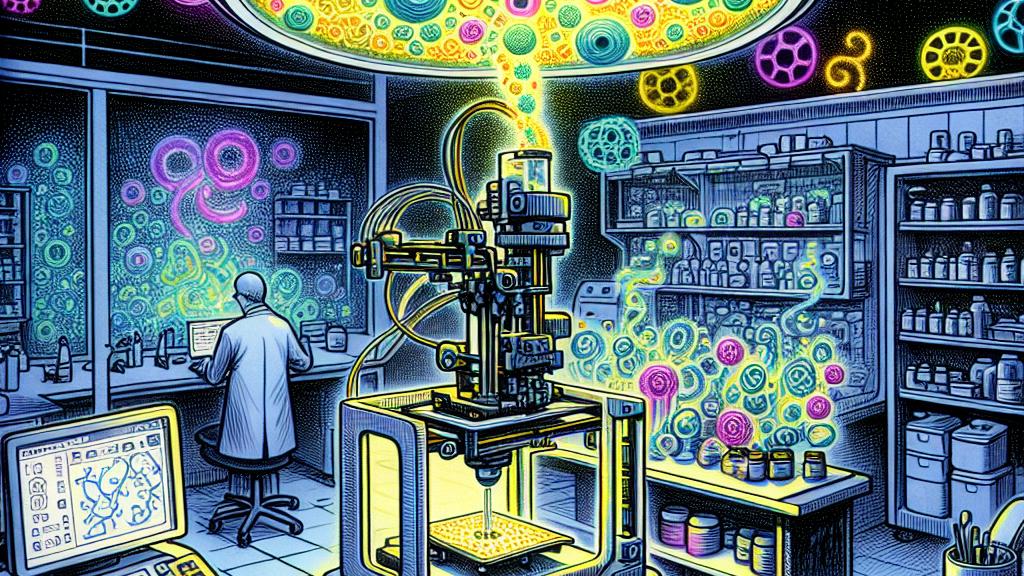Innovative Fluorescent Structures for Medical Use
Overview
- Revolutionary fluorescent 3D-printed structures advance medical implant monitoring, bringing hope for better patient outcomes.
- A groundbreaking collaboration between bioengineers and chemists unlocks diverse and transformative biomedical applications.
- This technology promises to deliver life-saving innovations in areas like wound healing, artificial blood vessels, and nerve regeneration.

A Feature-Rich Breakthrough in Fluorescent 3D Printing
In the thriving research hub of the University of Oregon, an extraordinary breakthrough in fluorescent 3D printing has emerged, capturing both academic and public interest. This innovative endeavor flowers from the collaboration between Paul Dalton’s innovative engineering lab and Ramesh Jasti’s esteemed chemistry lab. The result? Stunning structures that glow under ultraviolet light, highlighting the vibrancy of their intricate designs. By incorporating specially designed ring-shaped fluorescent molecules into the printing process, researchers have developed a system that not only creates functional medical implants but also allows them to emit brilliant colors, enabling real-time tracking inside the human body. This integration of technology transforms how we understand and monitor implants, making it far easier to differentiate them from surrounding cells and tissues—an essential step forward in biomedical applications.
The Innovative Technology Behind the Structures
Utilizing the cutting-edge technique known as melt electrowriting, the researchers can produce remarkably detailed and high-resolution 3D structures. Imagine a master sculptor, delicately crafting a masterpiece—it’s a similar mix of artistry and science. This technique has already led to practical applications, including the development of advanced wound-healing technologies and collaborations with well-known brands such as L'Oreal to create realistic artificial skin. What’s even more impressive is the stability of the carbon-based nanohoops that remain intact under the high heat required in the 3D printing process. Unlike prior attempts to create glowing scaffolds, this innovative combination has opened new doors for biocompatible materials, offering exciting possibilities in medicine and display technologies.
Transformative Potential in Medical Applications
The future implications of these fluorescent structures are nothing short of revolutionary, heralding a new era in medical implants. Envision a world where healthcare professionals can monitor the healing progress of implants in real time, allowing for tailored patient care and enhanced treatment outcomes. The spectrum of potential applications is vast—from groundbreaking wound healing technologies and advanced artificial blood vessels to engineered structures designed to regenerate nerves. Researchers are committed to ensuring that these innovative materials are biocompatible and stable, conducting rigorous testing to support their safe implementation in humans. As this groundbreaking technology inches closer to becoming a reality in clinical settings, it promises to elevate patient care to unprecedented levels and redefine the landscape of modern medicine, making a profound impact on the future of healthcare.

Loading...